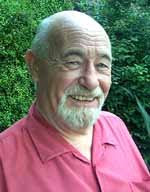A couple of years ago we found a little book titled Redwall Friend & Foe which gives a brief intro to key characters in the series as well as a poster of the heroes. The booklet opens with a brief piece by Jacques in which he describes his approach to heroes and villains. I have included a lengthy quote which I think highlights two key strengths of the series.
“I like my baddies to be totally wicked and my goodies to be heroically on the side of right! From the very first villain, Cluny the Scourge, I have imbued my wicked baddies with certain characteristics…. An arch villain always lusts after power, wants to conquer everything and rule all. He, or she, has no sympathy for any living creature that stands in the way of their malicious ambitions.”
He goes on to note that his typical bad guys are “repellent, ugly and usually insane.” However, he has deviated from this pattern a few times with sly, handsome villains “to illustrate to my young readers that somebody bad is not necessarily an ugly … person; evil has some very personable faces.”
“Martin the Warrior is the role model for all my Redwall Abbey goodies- he is the ultimate hero…. Like Martin, my heroes and heroines are all young creatures, the same as the young people who read my books. The lesson is this: you must learn to be a warrior. This does not mean being a martial arts expert or a Hollywood movie star. The warrior is someone whom others look to. One who tells the truth, defends the weak and is trustworthy and courageous. In short someone who is true to his or her friends and family.”
He says later that his warriors do not gain that status “through any magic tricks. No, my warriors gain heroic stature by their own determination.”
“There is no such thing as wickedness or evil in a hero. Goodies are GOOD!”
Books written from this view will almost certainly be good! Jacques writes in a clear moral universe where the heroes are intended to be pictures of virtue and villains are clearly bad. Sadly such an approach is becoming less and less common in general. Clarity between good and evil is a central piece in moral formation. And, Jacques is clearly aware that his stories are instructing his young readers, as he shows in these quotes. I want an author who knows that his stories will instruct (because they will whether you realize it or not) and then seeks to take that responsibility seriously.
So, “Go Redwaaaalll!”

I can’t remember who first recommended those books to my boys–but they completely devoured them! I enjoyed the pretend play that spun off from reading those books.
Exactly right Shep!
We must know our genre. Children’s fiction is primarily intended to give models worth aspiring to or avoiding. C. S. Lewis is great on this when he wrote about stories and writing. The point of stories is to move beyond ‘what is’ to ‘what ought to be.’
Of course we can have heroes who struggle, like Christian you mentioned, but it is never in question that Christian desires to follow Christ even when he fails. Too many stories today muddle the picture and leave the impression that there is no point in pursuing virtue.
In fact, I think this is a major floaw with th etwo recent movie editions of the Narnia stories- the children are not noble enough, unlike the books. But I plan to address that in another post soon.
Thanks Heather.
This is actually very interesting. I have read things by authors who say that the line between good and evil should not be so clearly defined because it is not “realistic.” That is, real people aren’t really that good. Today in fiction we get the flawed hero, not the idealistic hero – or worse we get the antihero.
However, the purpose of many ancient stories was not to present realism per se but idealism; things to inspire us and heroes we can look up to and find examples in. I think of Beowulf as an example – in the ancient Viking tale he is a flawless Christian hero saving the helpless from terrifying monsters. Also many people complain about Aragorn, the heroic lost king, being a two-dimensional character in “The Lord of the Rings” – but really he is not intended to be anything but a true hero, a force of good in the story.
While I think it is good to have heroes who struggle (Christian in “The Pilgrim’s Progress” strays from the path a few times and we can learn from his mistakes) it is also well to have characters who are discernably good (Christian, Evangelist) and discernably evil (Apollyon). I think this is especially important in stories for children, who are always looking for examples to follow.
Thanks for posting these quotes. I know about the series from my days as a bookseller but now that I’m a mom of a growing son, I’m trying to figure out what is worth our money and time.
I have really appreciated this blog over the years and I always find interesting books to look into.
So thanks.